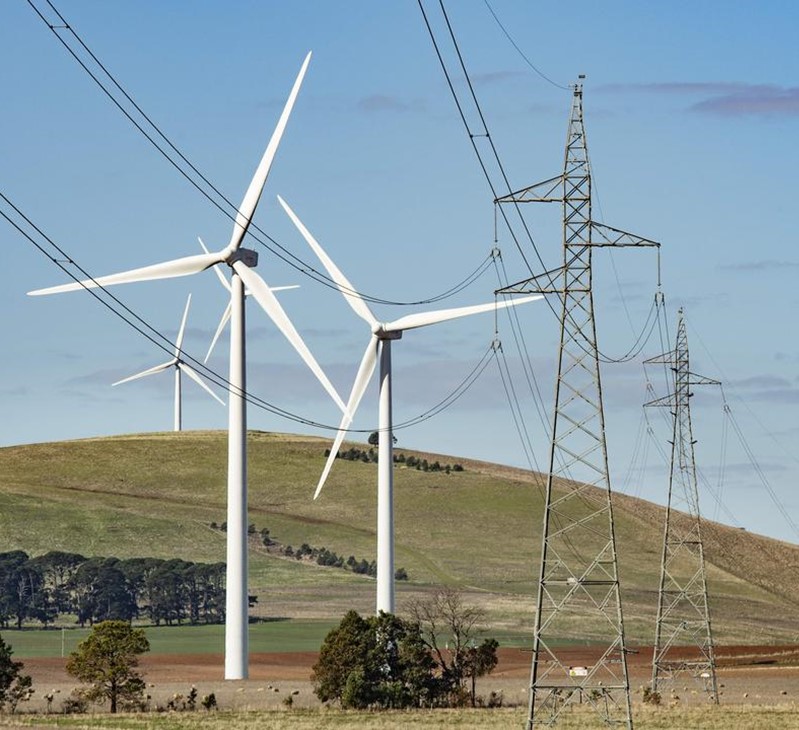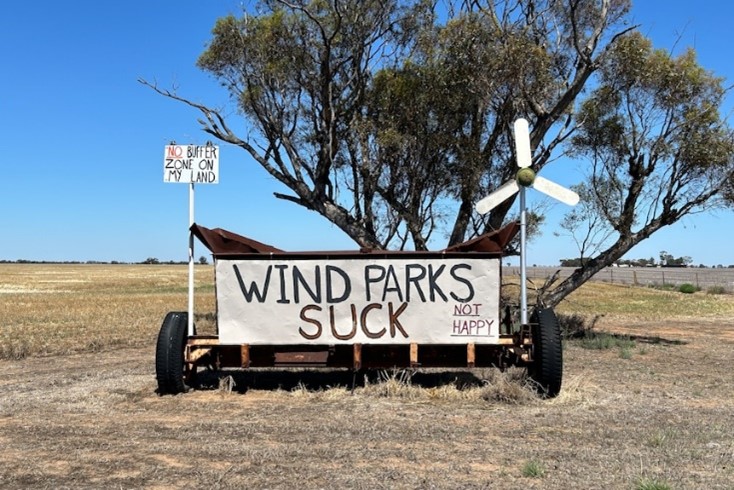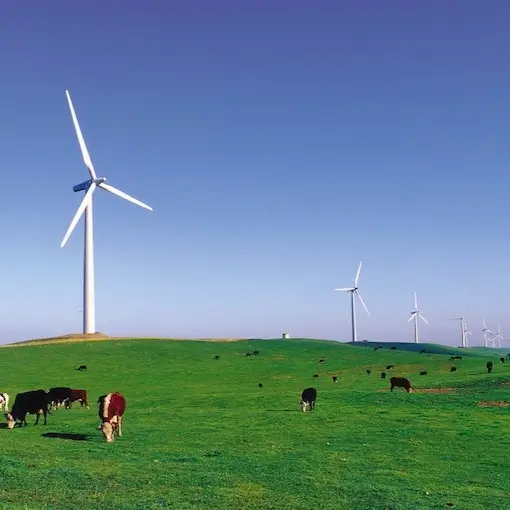The Regional Reality of Australia’s Energy Transition
25
November
2025
1
min read

Regional communities will play a pivotal role in Australia’s energy transition. However, the 2025 Federal Election highlighted the growing rural/metro divide, and the Coalition’s decision to walk away from its commitment to Net Zero by 2050 target will only add further complexity in the coming years.
Introduction
Australia’s energy transition is often discussed in terms of national targets, metropolitan policy debates, and the technological promise of renewables. However, beneath the metro dominated headlines and narratives lies an overlooked truth: its success will depend on regional Australia.
After all, it is in the regions, on farms, in small country communities, and across vast landscapes, that renewable energy infrastructure will be built – and where the social licence will be won or lost.
Despite this, regional communities frequently find themselves feeling overlooked in policy design and public discourse. The result is a growing disconnect: while all Australians will enjoy the benefits of cleaner energy, it is regional Australians who will be required to host the infrastructure, absorb the disruption, and adapt to new realities in their towns.
In November 2025, the Federal Opposition dropped Net Zero by 2050 from its policy platform, and released its ‘Plan to Secure Australia’s Energy Future’, seeking to represent an approach perceived to be favoured by regional Australia. The Plan sets lower emissions reduction targets (where achieving Net Zero by 2050 would be a “welcome outcome”), and takes a ‘technology-neutral’ approach. The Liberal policy would also create a new legislated “Code of Conduct” for electricity infrastructure projects for social licence and the protection of prime agricultural lands.
Key Facts
- Australia's current target is for 82 per cent of electricity to be generated by renewables by 2030. In 2024, 36 per cent of electricity was generated by renewables.
- AEMO predicts 5,000 km of new/upgraded transmission lines will be needed in the next decade; only 1,000 km has been completed so far.
- The cost of building NSW’s first Renewable Energy Zone has risen to over $5.5 billion, 8.5 times the original estimate of $650 million in 2020.
- 92 per cent of landowners and community members were dissatisfied with the level of engagement from project developers.
- Out of the four Australian Electoral Commission geographic classifications, only in “rural” areas were respondents more likely to consider voting Coalition than Labor, by a margin of 2.8 per cent, with Labor leading by 8.5 per cent in provincial areas, 14.8 per cent in outer metropolitan areas, and 17.1 per cent in inner metropolitan areas.
The Current Policy Landscape
- Target for 82 per cent of electricity to be generated by renewables by 2030 and to achieve net zero by 2050.
- Renewable Energy Zones – Clusters of large-scale renewable energy projects can be developed using economies of scale, supported by network infrastructure.
- Capacity Investment Scheme – Provides government support to renewable projects, where companies are subsidised when revenue falls below an agreed threshold but pay money back to the government when revenue is high. Essentially a revenue underwriting scheme for renewable projects. The CIS is intended to deliver an additional 32GW of capacity in total by 2030 costing an estimated $67 billion.
- Rewiring the Nation – A $20 billion fund to provide low-cost finance to upgrade, expand and modernise Australia’s electricity grid.
Social License
In February 2024, Minister for Climate Change and Energy the Hon. Chris Bowen MP endorsed all nine recommendations of the Energy Sector Community Engagement Review. This Review was established in 2023 in response to growing regional resistance to renewable project developments.
A key recommendation was the introduction of a Developer Rating Scheme, which commenced as a pilot in August 2025 and is due to rollout in March 2026. This will provide regional communities with independent information on a developer’s track record, community engagement, integrity and performance.
Separate to this, the Capacity Investment Scheme tender process includes what the Department of Climate Change, Energy, the Environment and Water describes as a “strong weighting on community and First Nations engagement and social license commitments”.

Challenges
1. Political Representation
The 2025 Federal Election saw the Australian Labor Party dominate in metropolitan, suburban and outer suburban electorates. It also holds a large number of provincial or regional seats and nine rural seats. The combined Liberal-National parties represent many rural electorates across Australia where much of the onshore renewable projects are being constructed. The election results highlighted the complexity of Australia’s regional dynamics. A YouGov poll released on 02 September 2025 showed that it was only in electorates classified as rural by the Australian Electoral Commission that respondents were more likely to vote for the Coalition by a margin of 2.8 per cent, with Labor leading by 8.5 per cent in provincial areas, 14.8 per cent in outer metropolitan areas and 17.1 per cent in inner metropolitan.
Labor argues it has the mandate to continue with the transition to renewables, believing the Coalition’s platform of nuclear energy and a focus on continued coal baseline generation has been rejected by voters. The Government is buoyed by groups like Farmers for Climate Action who argue that climate adaption is critical and benefical for Australian agriculture.
With this in mind, even if the ALP had lost every one of the nine rural seats it currently holds, it would have still increased its majority at the last election.
In crude terms, the Government could lose all of its nine rural electorates and still hold an increased majority from the 2022 Parliament. This fact could tempt the Government to focus only on urban and suburban voters with little regard to any negativity generated by rural constituencies from the use of regional land for renewable projects.
2. Genuine consultation and partnership
Despite the upcoming Developer Rating Scheme and consideration of community engagement in CIS tenders, regional communities still feel shortchanged by the transition.
They are being asked to accept major infrastructure builds in their community, which, although there may be financial benefits to the landowner who hosts infrastructure, has an impact on the region.
There is widespread belief that developers engage in community consultation as a box ticking exercise. The Dwyer Report found that 92 per cent of landowners and community members were dissatisfied with the extent to which project developers engaged with them.
The situation has not improved, with Australian Energy Infrastructure Commissioner, Tony Mahar, saying in May 2025 that “communities still feel like the energy transition is being done to them, not with them”.
3. Planning and approval process
There is a significant bottleneck slowing the transition and disincentivising developers.
In August, it was reported that not one of the 76 renewables projects needing a Federal environmental assessment in NSW, Victoria or Queensland in 2023 or 2024 has received final approval.
Conversely, some regional voices are arguing with increased tempo that the benefits of renewable energy do not outweigh the costs to local ecosystems and the assessment process is an important step to ensuring the balance is right.
Federal Minister for the Environment the Hon, Murray Watt MP has been progressing reforms to the Environment Protection and Biodiversity Conservation Act, which requires the support of either the Greens or Coalition to pass the Senate. The final version of the Act may determine how this balance plays out.
4. Championing support within regional communities
Despite the poll results, there are pockets of support within regional and rural communities for the energy transition. These voices need to be found, supported and amplified.
Experience from the Good for the Gong campaign in the Illawarra and from the Hunter Jobs Alliance in the Newcastle region show how small groups of activists can establish and build support for clean energy within communities. These groups have focused on showing the local opportunities from new renewable energy projects, including in advocating for direct benefit schemes and programs and working on behalf of the community to address specific concerns like space and location.
Activists and developers need to work with local communities to find these existing legitimate supporters and platforming their voices. This may include working with local activist groups as “shop stewards” for a region to address legitimate concerns and provide local ‘wins’ above and beyond the benefits of the project.
Conclusion
Rural Australia must be effective in articulating and advocating how important it is to metropolitan areas. This will never be achieved on a vote winning basis, as the populations are so much smaller than cities.
However, on a resource and contribution to the economy basis, the regions pull their weight – especially for the industries of national security, be that food, minerals or energy.
If the cities are the engine rooms of our country, rural Australia is the providing the fuel.
This is about ensuring that the energy transition is done with regional Australia, not to it.
Without this, the social license needed to deliver the transition will remain fragile, and the divide between rural and metropolitan Australia will only continue to grow.
A fragmented urban-rural divide is already having an impact on our national politics, driving first the National Party and now the Liberal Party to abandon a bipartisan position on Net Zero established under the Morrison Government. Further divisions may have long term consequences on our national polity and slow the energy transition.
It is in the direct interest of developers, investors, activists and the Federal Government to craft a careful message, matched with genuine consultation and partnership to demonstrate that all Australians stand to benefit from the transition.
6
November
2025

The 2025 Australian Political Book of the Year is...
Read news article
6
November
2025

The 2025 Australian Political Book of the Year is...
Download White Paper
3
November
2025

The return of Net Zero politics
Read news article
3
November
2025

The return of Net Zero politics
Download White Paper






